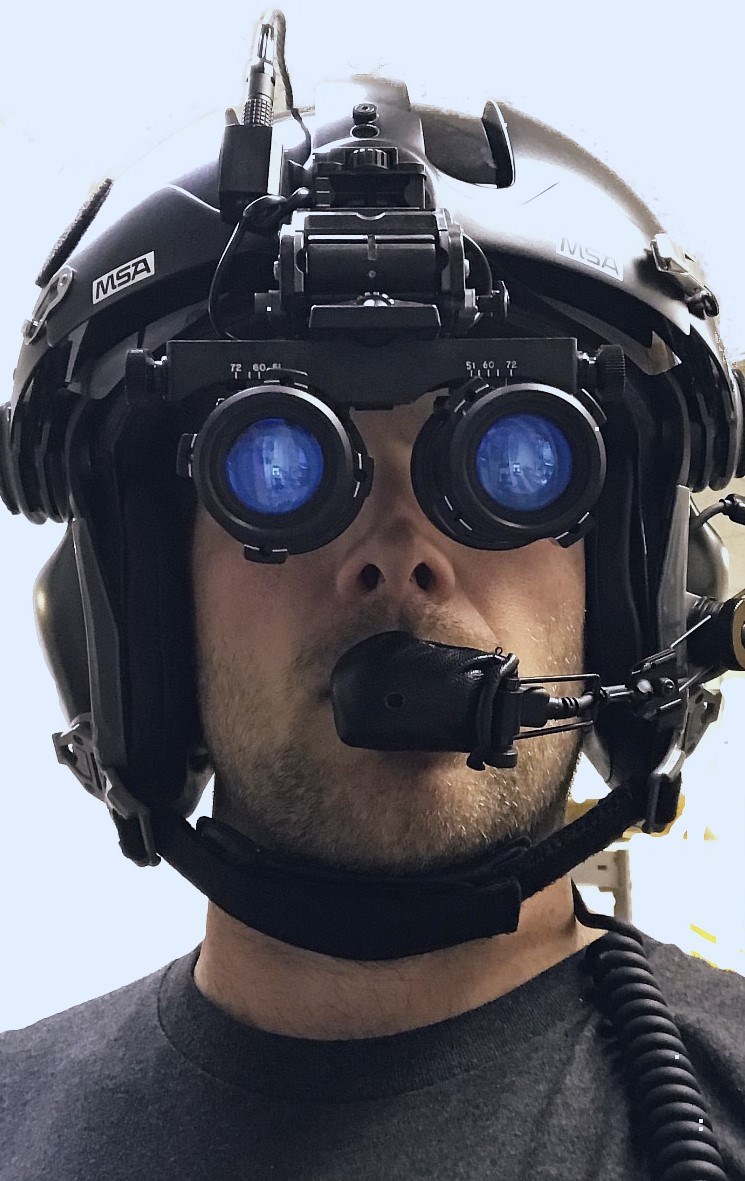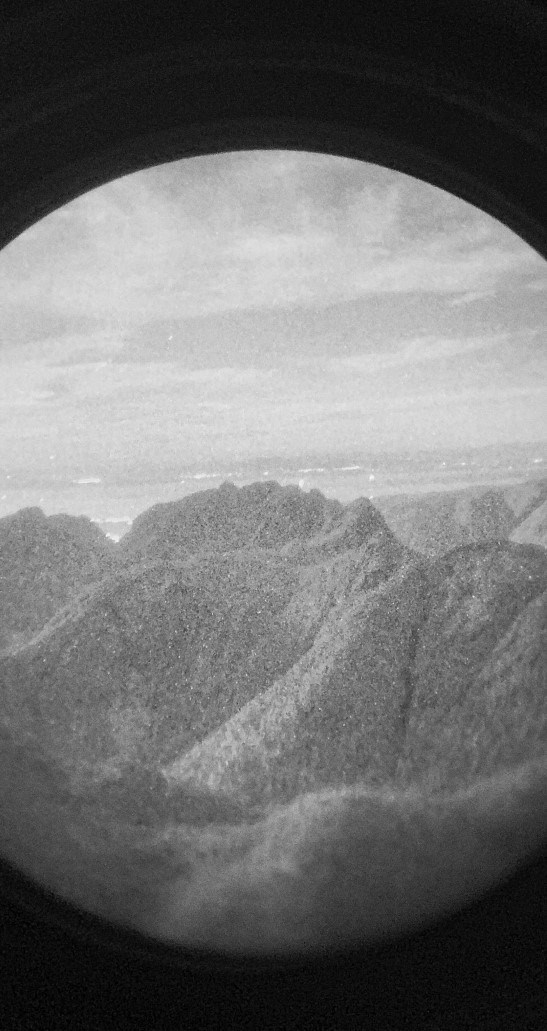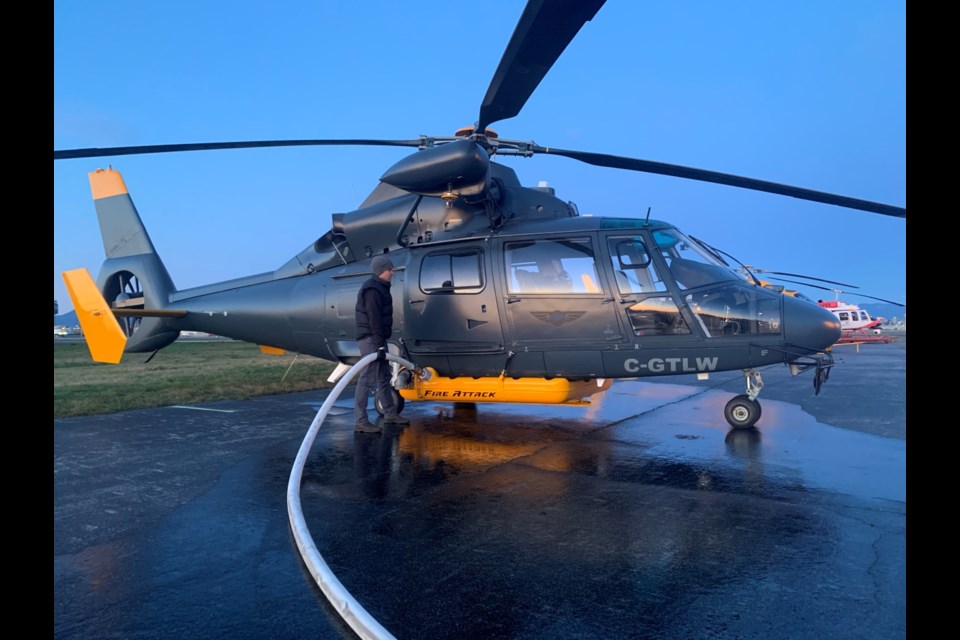A small pair of binocular-style goggles, fitted to the helmet of a helicopter pilot, is paving the way for future nighttime fire attack missions in B.C.
Richmond-based Talon Helicopters has the only Transport Canada-approved night vision goggle (NVG), night fire attack helicopter – known as the Airbus AS365 N2 Dauphin – in the country.
“We do a lot of rescue work (as well as) fire-fighting, but we couldn’t do that once civil twilight ended – so half an hour after sunset,” said Peter Murray, president of Talon.
“So this (NVG) allows us to now fly during those periods.”

The company received the Transport Canada certification March 30. But in order for the NVG to be approved, the cockpit and cabin of the nine-passenger aircraft had to be refitted, said Murray.
Every single gauge, switch and instrument that’s backlit – such as the screen, radio and GPS – had be to NVG-compatible, fitted with a green glass filter so no light source inside the aircraft would interfere with the goggles or blind the pilots, said Murray, ensuring they have a clear view of what’s outside the cockpit.
Murray said the company is right at the “leading edge,” given that the technology – originally developed for the military – is new to a commercial setting in Canada, but the benefits are clear.
For example, while a single source of ignition could light one tree on fire at 11 p.m., “by the time firefighters gets to it after six to eight hours, well, now you’ve got a two hectare, three hectare fire,” Murray explained.
But if the helicopter – which has a tank that can hold up to 901 litres of water and can travel up to 260 km/hour with that tank installed – is on standby, it could arrive at the scene fast. The helicopter can also drop 7,715 litres of water per hour (with a seven-minute turnaround time to on a tanking run) on a fire or hot spot and has an endurance of three hours.
“It’s that golden hour,” said Murray. “Wouldn’t you rather put 20,000 litres of water all around (a tree on fire) to reduce the spread, so that in the morning, there’s a smaller area to extinguish.”
Talon is also looking into collecting data on day- and nighttime fire attack operations to evaluate the cost of fighting fires at night versus the cost of losing resources like structures or trees.

The company can also employ the technology locally in cases of late-night structure fires, and Murray said the company will be reaching out to local municipalities and fire departments.
The goggles, which are white phosphorus, said Murray, amplify and magnify light by about 50,000 times, meaning that the human eye “can see outside like it’s daylight,” illuminating the world below like a “black and white movie.”
The certification process took about two years, from January 2018, while the company first purchased the Dauphin in late 2017, and all of Talon's pilots have received NVG training.
The built-in safety features of the Dauphin likely also helped Talon receive its Transport Canada certification, said Murray, for example, terrain awareness, as well as an active traffic system, which warns the pilot of other aircraft around the helicopter to prevent collisions.
While the aircraft is ready to go and is Transport Canada approved, said Murray, Talon is waiting on separate certification from the province.
The aircraft can also carry out search and rescue and medevac missions, as well as aerial lift work. Its hoist system has been approved by Transport Canada and can be used in nighttime rescue operations. The helicopter is also approved for night hover entry/exit, where crews use specialized techniques to enter or exit a helicopter hovering above the ground.
Talon is also planning to use NVG to assist with search-and-rescue missions, once the technology is approved by the provincial government.
For example, said Murray, the company, works with North Shore Rescue to move volunteers into or out of Haines Valley – typically a three or four hour hike – where there’s a helipad, during the day.
“What we would like to be able to do is move, at night, the volunteers to that helipad,” he said. “And they get out and they start their night searching, and they’re fresh at that four-hour mark instead of getting there (after hiking) two in the morning.”



